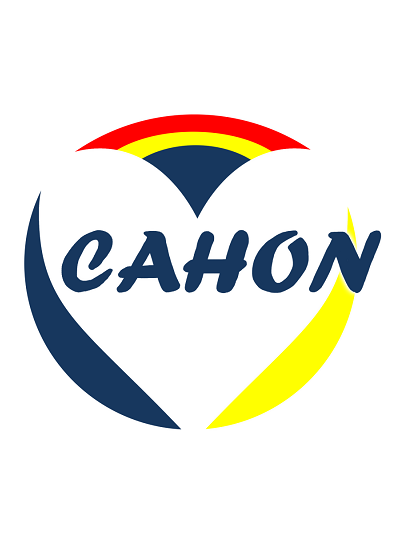Olutasidenib in combination with azacitidine induces durable complete remissions in patients with relapsed or refractory mIDH1 acute myeloid leukemia: a multicohort open-label phase 1/2 trial
IF 29.5
1区 医学
Q1 HEMATOLOGY
引用次数: 0
Abstract
Olutasidenib is a potent, selective, oral, small molecule inhibitor of mutant IDH1 (mIDH1) which induced durable remissions in high-risk, relapsed/refractory (R/R) mIDH1 AML patients in a phase 1/2 trial. We present a pooled analysis from multiple cohorts of the phase 1/2 trial of patients with R/R AML who received combination olutasidenib and azacitidine therapy. Adult patients with mIDH1R132 AML received 150 mg olutasidenib twice daily plus standard-of-care azacitidine (OLU + AZA) and were evaluated for response and safety. Sixty-seven patients with R/R mIDH1R132 AML received combination OLU + AZA. Median age was 66 years (range 28–82) and 54% were male. Most patients (83%) had 2 + prior regimens, including a hypomethylating agent in 40%, IDH1 inhibitor therapy in 31% (olutasidenib in 24%), and hematopoietic stem cell transplant in 10%. Cytogenetic risk was intermediate in 72%, poor in 18% and unknown in 10%. CR/CRh was achieved in 21/67 (31%; 95% CI 21–44) patients, with a median duration of 14.7 months (95% CI 4.6-not reached). CR was achieved in 18/67 (27%; 95% CI 17–39) patients, with median duration of 20.3 months (95% CI 3.7-not reached). Overall response (partial remission or better) was achieved in 34/67 (51%; 95% CI 38–63) patients. Median overall survival was 12.9 months (95% CI 18.7–19.3). In a subset analysis excluding patients who had prior OLU exposure (N = 51), CR/CRh was achieved in 19/51 (37%; 95% CI 24–52) patients, CR was achieved in 16/51 (31%; 95% CI 19–46), and overall response was achieved in 30/51 (59%; 95% CI 44–72). In patients who achieved CR/CRh and were transfusion-dependent at baseline, transfusion independence (RBC and platelets) was achieved in 64% (7/11) and 57% (4/7) of patients, respectively. The most common Grade 3 or 4 adverse events (> 20% patients) were decreased platelet count (37%), red blood cell count (25%), and neutrophil count (24%). Six patients (9%) experienced differentiation syndrome. Four (6%) discontinued treatment due to an adverse event. Olutasidenib plus azacitidine induced high response rates and durable remissions with a tolerable side effect profile in patients with R/R AML with diverse treatment histories. The results represent another therapeutic option for patients with mIDH1 AML who may benefit from a targeted therapy. NCT02719574.Olutasidenib联合阿扎胞苷可诱导复发或难治性mIDH1急性髓系白血病患者持久完全缓解:一项多队列开放标签1/2期试验
Olutasidenib是一种有效的、选择性的、口服的、小分子的突变型IDH1 (mIDH1)抑制剂,在一项1/2期试验中,该抑制剂可诱导高风险、复发/难治性(R/R) mIDH1 AML患者持久缓解。我们提出了一项来自接受olutasidenib和阿扎胞苷联合治疗的R/R AML患者的1/2期试验的多个队列的汇总分析。mIDH1R132 AML成年患者接受150mg olutasidenib +标准治疗阿扎胞苷(OLU + AZA),每日两次,并评估其疗效和安全性。67例R/R mIDH1R132 AML患者接受OLU + AZA联合治疗。中位年龄为66岁(28-82岁),54%为男性。大多数患者(83%)有2个以上的既往方案,包括40%的低甲基化药物,31%的IDH1抑制剂治疗(24%的olutasidenib)和10%的造血干细胞移植。细胞遗传学风险为中等的占72%,较差的占18%,未知的占10%。CR/CRh: 21/67 (31%;95% CI 21-44)患者,中位持续时间为14.7个月(95% CI 4.6-未达到)。CR为18/67 (27%;95% CI 17-39)患者,中位持续时间为20.3个月(95% CI 3.7-未达到)。总体缓解(部分缓解或更好)达到34/67 (51%;95% CI 38-63)。中位总生存期为12.9个月(95% CI 18.7-19.3)。在排除既往有OLU暴露的患者(N = 51)的亚组分析中,CR/CRh在19/51 (37%;95% CI 24-52)患者中,16/51 (31%;95% CI 19-46),总体缓解率为30/51 (59%;95% ci 44-72)。在达到CR/CRh并在基线时输血依赖的患者中,分别有64%(7/11)和57%(4/7)的患者实现了输血独立(RBC和血小板)。最常见的3级或4级不良事件(20%的患者)是血小板计数(37%)、红细胞计数(25%)和中性粒细胞计数(24%)下降。6例(9%)出现分化证。4例(6%)因不良事件停止治疗。在具有不同治疗史的R/R AML患者中,Olutasidenib +阿扎胞苷可诱导高缓解率和持久缓解,副作用可耐受。这些结果代表了mIDH1 AML患者的另一种治疗选择,他们可能从靶向治疗中受益。NCT02719574。
本文章由计算机程序翻译,如有差异,请以英文原文为准。
求助全文
约1分钟内获得全文
求助全文
来源期刊
CiteScore
48.10
自引率
2.10%
发文量
169
审稿时长
6-12 weeks
期刊介绍:
The Journal of Hematology & Oncology, an open-access journal, publishes high-quality research covering all aspects of hematology and oncology, including reviews and research highlights on "hot topics" by leading experts.
Given the close relationship and rapid evolution of hematology and oncology, the journal aims to meet the demand for a dedicated platform for publishing discoveries from both fields. It serves as an international platform for sharing laboratory and clinical findings among laboratory scientists, physician scientists, hematologists, and oncologists in an open-access format. With a rapid turnaround time from submission to publication, the journal facilitates real-time sharing of knowledge and new successes.

 求助内容:
求助内容: 应助结果提醒方式:
应助结果提醒方式:


